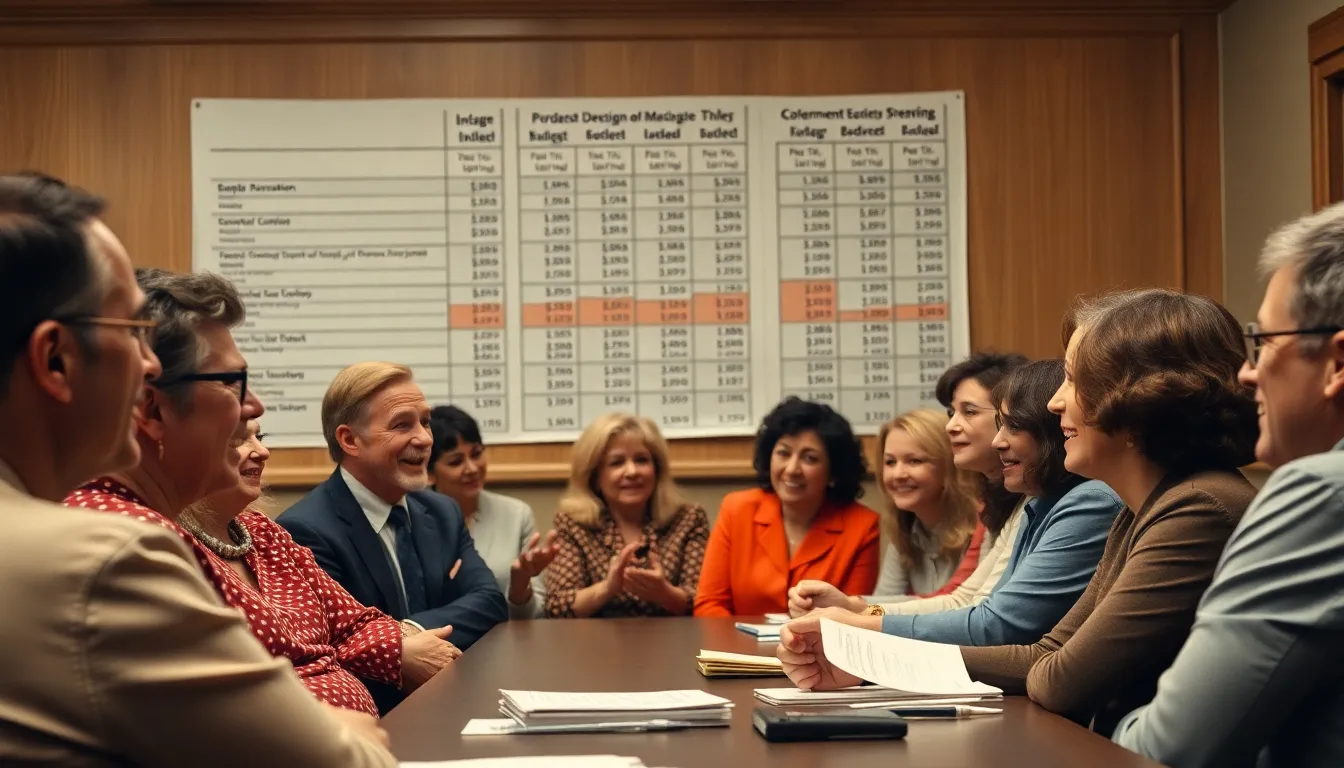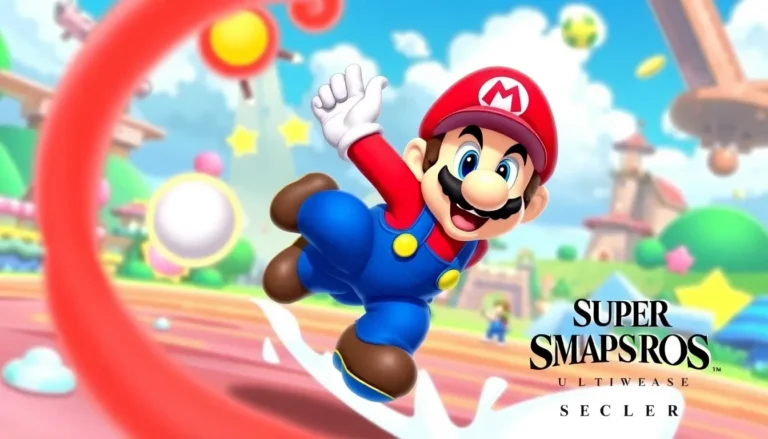Table of Contents
ToggleIn a world where government spending often feels like a never-ending game of Monopoly, the “doge list of government spending” brings a refreshing twist. Imagine a whimsical take on the serious business of budgets and expenditures, where the iconic Shiba Inu meme meets fiscal responsibility. It’s not just about numbers; it’s about understanding where our tax dollars go while having a few laughs along the way.
This playful yet informative approach sheds light on the often bewildering world of government finance. From extravagant projects to questionable expenses, the doge list serves up a hearty dose of transparency mixed with humor. So buckle up as we dive into this entertaining exploration of how our money is spent, proving that even the driest topics can have a little fun. After all, who said budgeting can’t be a riot?
Overview of Doge List of Government Spending
The Doge list of government spending presents a unique lens through which to view public finances. It combines humor and fiscal scrutiny, showcasing various government expenditures that may seem extravagant or unnecessary. Highlighting lavish projects, the list encourages citizens to question the rationale behind such spending.
This playful approach captures attention while addressing serious financial matters. Transparency becomes a central theme, as taxpayers deserve clarity regarding how funds are utilized. Public engagement increases when complex topics are presented in a digestible format.
Notable entries often include funding for projects perceived as low priority. Government agencies sometimes allocate significant amounts towards initiatives that raise eyebrows. Examples of these include art installations in urban settings or large-scale studies with limited practical application. Such expenditures prompt discussions about budgetary priorities.
Additionally, unconventional spending items often feature on the Doge list. Taxpayers see allocations for events or activities that may not directly benefit public welfare. By spotlighting these expenses, the Doge list urges thoughtful consideration of fiscal responsibility.
Overall, the Doge list of government spending serves to bridge the gap between humor and financial accountability. It fosters a culture of inquiry, encouraging individuals to stay informed about public expenditure. Engaging citizens through entertainment can lead to greater advocacy for transparency and responsible spending.
Key Components of the Doge List

The Doge list highlights key aspects of government spending through a humorous lens. It emphasizes transparency and accountability, making fiscal matters accessible.
Allocation of Funds
Allocating funds involves prioritizing specific expenditures over others. Often, the Doge list showcases spending directed toward projects perceived as unnecessary. Taxpayer dollars may support extravagant art installations instead of essential services. Illustrative examples encompass studies with minimal practical benefits, prompting discussions about financial priorities. Citizens deserve clarity regarding these allocations and how funds impact their communities. Highlighting these expenses allows for greater scrutiny of budget decisions.
Impact on Various Sectors
Impacts vary across different sectors when examining government spending. The Doge list reveals how certain industries receive disproportionate funding. For instance, artistic projects might overshadow vital public services like healthcare and education. Observing these discrepancies can lead to community discussions about resource distribution. Citizens gain insight into how spending choices affect their daily lives and priorities. Engaging with the Doge list encourages individuals to reflect on the importance of balanced budget allocations.
Analysis of Spending Trends
Analysis of government spending trends reveals patterns that reflect historical decisions and recent changes. Understanding the context of these expenditures provides clarity on current budgeting practices.
Historical Context
Government spending has evolved significantly over the decades. Historical shifts often follow economic needs from wartime spending to social programs in peacetime. Taxpayer dollars funded public works initiatives in the 1930s, aiming to combat the Great Depression. Various political ideologies influenced allocations, as seen during the New Deal and the War on Poverty. Major trends also included increased spending in health and education sectors during the latter half of the 20th century. Understanding these historical trends helps contextualize today’s fiscal choices.
Recent Developments
Recent years have shown notable changes in government spending priorities. Increased attention on infrastructure has led to significant investments in transportation and broadband access. Public health funding surged in response to the COVID-19 pandemic, addressing immediate needs. Stimulus packages also emerged to support economic recovery, showcasing a shift towards more flexible budgetary strategies. Trends in government spending increasingly highlight the importance of addressing urgent social issues while maintaining fiscal responsibility. Such developments raise questions about long-term sustainability and priorities in future budgets.
Public Response and Criticism
Public reactions to the Doge list reflect a mix of support and criticism. Citizens express varying views on extravagant government spending, with many finding humor in the absurdity of certain expenditures.
Support from Citizens
Enthusiasm for the Doge list arises from its entertaining approach to serious financial issues. Many citizens appreciate the playful critique, as it highlights questionable budget allocations. This format encourages engagement and invites discussion about how taxpayer money is spent. Transparency becomes a focal point, with citizens voicing the need for clarity regarding government priorities. By amplifying awareness of spending disparities, the Doge list empowers individuals to scrutinize financial decisions.
Opposition from Various Groups
Critics argue that the Doge list oversimplifies complex financial matters. Some groups assert that humor may undermine serious discussions about government priorities. Concerns arise that focusing on individual expenditures might divert attention from broader fiscal challenges. Various advocacy organizations emphasize the importance of essential services over trivial spending, urging officials to prioritize necessary programs. Legislative bodies face pressure to address such criticisms and improve budget transparency. Balancing humor with accountability becomes crucial, as the conversation around government spending continues to evolve.
Future Implications of the Doge List
The Doge list’s influence extends beyond humor, prompting citizens to reflect on the implications of government spending. Citizens become more engaged when they see how extravagant projects are funded while essential services face budget cuts. Transparency emerges as a critical factor, ensuring taxpayers understand where their money goes.
Critics argue that the playful nature of the Doge list risks oversimplifying significant financial issues. Simplified discussions might divert attention from critical areas needing reform, especially in healthcare and education. Political leaders must recognize this balance between humor and accountability to foster informed public discourse.
Vigilance regarding government priorities becomes essential as laughter may not accompany every spending detail. Creative projects, while appealing, might not address pressing social issues, encouraging citizens to advocate for better allocation of funds. Demonstrating the effects of spending choices on daily life reinforces the need for scrutiny in budget decisions.
Infrastructure improvements exemplify how shifts in spending priorities can respond to societal needs. Observers note increased funding in public health and safety, particularly following recent global challenges. Understanding these trends supports informed conversations about fiscal sustainability and efficient resource use.
Awareness of spending patterns fosters a culture of inquiry, urging taxpayers to question allocations further. Engaging with the Doge list equips individuals to critically analyze how government decisions impact their quality of life. Advocating for a better balance between whimsical expenditures and essential services emphasizes the ongoing need for responsible financial management.
The Doge list of government spending offers a fresh perspective on how taxpayer dollars are allocated. It encourages a dialogue about fiscal responsibility while making the topic engaging and accessible. By spotlighting extravagant expenditures and questioning their necessity, it empowers citizens to think critically about budget priorities.
As discussions around government spending evolve, the importance of transparency and accountability remains paramount. The Doge list serves not only as a humorous critique but also as a call to action for taxpayers to demand clarity in financial decisions. Balancing playful commentary with serious fiscal considerations can lead to more informed public discourse and ultimately better governance.







